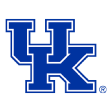Other regions: South | Midwest | West
It's upset time, baby. We've again gone deep in analyzing each of the six Giant vs. Killer matchups for each of the four regions. Remember, a Giant Killer is any team that beats an opponent seeded at least five spots higher. See our full methodology for more details.
We are once again utilizing our standard categories of Best Bets, Worth A Long Look, Not Completely Crazy and Stay Away. If you object to a game's placement, you're arguing with math: Our statistical model generates upset odds for each game. Those odds are based on three key factors: basic power ratings, teams' "Secret Sauce" (their statistical similarity to past Davids and Goliaths) and the matchup between Giants' and Killers' playing styles. This year, we also introduced a similar games component that is not yet a predictive part of the model, but adds interesting insights. Below each game's upset odds, you'll find data on how similar GK games have turned out, dating to 2007.
Best bets
No. 6 Notre Dame (Giant rating: 76.4, on a scale of 0 to 100 percent chance of beating an average Giant Killer) versus No. 11 Michigan Wolverines (Giant Killer rating: 34.8, on a scale of 0 to 100 percent chance of beating an average Giant)


Upset chance: 56.5 percent
(In the four most similar GK matchups to Notre Dame-Michigan since 2007, the Giants went 2-2, outscoring Killers by an average of 4.4 points per 100 possessions.)
Sometimes an upset just makes so much sense that we can ignore most of the advanced metrics that our model analyzes. If Michigan can get past Tulsa, this appears to be one of those games. Only six tourney teams play worse defense than Notre Dame, and those just happen to be the six No. 16 seeds. So it's astounding that a team giving up an adjusted 103.7 points per 100 possessions even won enough games against a tough schedule to earn a 6-seed. Their defensive issues make the Irish exceptionally vulnerable, particularly against a sharpshooting Killer. And that's exactly who they'll face in Michigan, which takes 44.5 percent of its shots from 3-point range (17th in the nation) and hits 38.4 percent of them (29th). Duncan Robinson, Zak Irvin, Derrick Walton Jr. and Aubrey Dawkins are going to get all the open looks they can handle. If they can convert them at their usual rate, Notre Dame is in deep, deep trouble.
The Irish have a major advantage at the other end, of course. Michigan's D isn't particularly effective either (an adjusted 101 points per 100 possessions allowed) and the Irish rank 10th in the nation in offensive efficiency. They can't match the Wolverines' firepower from deep, but Zach Auguste gives them a serious inside presence and Demetrius Jackson has little trouble creating for himself and his teammates.
Interestingly, the two games most similar to this one involve earlier incarnations of each program: Michigan's 2009 loss to Oklahoma and Notre Dame's 2007 loss to Winthrop. Additionally, when members of the Perimeter Killer clan have faced Gambling Giants in the past, those games have generated upsets 20 percent of the time. And few of those matchups feature teams as close in strength as these two. In fact, our model's power rankings section lists Michigan (34th) ahead of Notre Dame (39th) -- our model believes the Irish were seeded far too high. Put it all together, and it's easy to see why this is the best bet on the board for a first-round upset
No. 3 West Virginia (97.8) versus No. 14 Stephen F. Austin (36.3)


Upset chance: 44.4 percent
(In the four most similar GK matchups since 2007, the Killers went 2-2, outscoring Giants by an average of 1.4 points per 100 possessions.)
It's nearly impossible to overstate how much our statistical model loves West Virginia. With an astounding and historic combination of leading the nation in both offensive rebound percentage and steal percentage, the Mountaineers hoard possessions and should be able to easily withstand an off shooting night or a hot stretch by a would-be Killer.
But here comes trouble. Stephen F. Austin is a Slow Killer: The Lumberjacks play at a deliberate pace, shoot well (55.5 effective field goal percentage, 12th in the nation) and grab their own missed shots (33.5 offensive rebound rate). That type of small fry causes all kinds of problems for top seeds who focus on offensive rebounding: Since 2007, Power Giants have lost 23.5 percent of games to Slow Killers, compared with just 10 percent to all other Killers. Even more important, historically it has been the quality of the underdogs that have driven those results: For upsets, think of Wichita State against Gonzaga in 2013 or against Kansas in 2015. And the Lumberjacks aren't just a Slow Killer, they're a fantastic Killer. Through relentless pressure, they force turnovers on a whopping 25.9 percent of opponent possessions, making them the only NCAA team with a higher rate than West Virginia. And overall, our model estimates their style of play adds 10.3 points per 100 possessions to their basic strength in matchups against Giants, by far the greatest "Secret Sauce" for any Killer in the tournament.
West Virginia also forces turnovers at a far higher rate than most of the teams it otherwise resembles statistically. So we're in for a game where neither side allows the other any continuity. But that just underscores the point, as does the even split of the four games most comparable to this matchup: This is gonna be a tight one.
Worth a long look
No. 6 Notre Dame (76.4) versus No. 11 Tulsa Golden Hurricane (14.2)


Upset chance: 29.7 percent
(In the four most similar GK matchups since 2007, the Giants went 2-2, outscoring Killers by an average of 3.5 points per 100 possessions.)
No one should be cheering harder for Tulsa than Notre Dame fans. The odds of an upset shrink by nearly half if the Irish draw the Golden Hurricane instead of Michigan. Simply put, Tulsa is neither as good a team nor as good a Killer as Michigan. Our model's power rankings say Tulsa is just the 65th-best team in the country, which is seven spots behind Northwestern, for crying out loud. And Tulsa doesn't play much like a Killer, as it gets crushed on both the offensive and defensive boards and takes only 36.6 percent of its shots from 3-point range. If the Golden Hurricane is to pull off an upset, it will be the result of a large edge in the turnover battle. They give the ball up on just 15.5 percent of possessions (26th in the country) and take it away 20.6 percent of the time (44th).
But Notre Dame, with Jackson directing an efficient, careful offense, is a tough team to harass. The Irish give the ball away just 14.8 percent of the time (10th in the nation), which should negate Tulsa's best weapon. Instead, Tulsa must find some chameleon-like ability to ramp up its offensive rebounding from a paltry 27.9 percent rate to take advantage of Notre Dame's weakness on the defensive backboards. And they'll have to hoist more 3s against an Irish team that allows foes to shoot 37.6 percent from deep. Otherwise, they'll have to hope history is on their side: The two historical GK matchups (since 2007) most similar to this one are Duke-Lehigh from 2012 and Duke-Mercer from 2014. Mike Brey is a former Duke assistant, after all, and the Golden Hurricane would love to give him a taste of his old school's suffering.
Not completely crazy
No. 4 Kentucky Wildcats (95.9) vs. No. 13 Stony Brook Seawolves (6.6)


Upset chance: 7.9 percent
(In the four most similar GK matchups since 2007, the Giants went 4-0, outscoring the Killers by an average of 25.4 points per 100 possessions.)
When we started studying Giant Killer families last year, one of the more interesting trends to emerge was the work Slow Killers have done against Power Giants. Since 2007, Slow Killers have won 23.5 percent of those matchups, likely because they limit the number of possessions in a game with their deliberate pace and absorb some of the Power Giants' typical edge on the boards.
The problem with this particular matchup between those two clans, though, is that Kentucky isn't your typical Power Giant. If our model had ears, it would cover them every time John Calipari claimed the selection committee was attempting to "steal his joy." That said, it agrees that the Wildcats were underseeded -- they're ninth in the model's power rankings section. And while the Cats' statistical profile perfectly fits the Power Giant category -- they crush teams on the offensive glass, don't force many turnovers and shoot few 3-pointers --we also know that they are really fueled by their backcourt. Tyler Ulis and Jamal Murray are a handful for any team to contain, and Stony Brook had enough trouble keeping Vermont's guards out of the lane in the America East final. Ulis takes care of the ball exceptionally well and creates easy baskets for the nation's top-ranked offense (an adjusted 122.3 points per 100 possessions). It's hard to imagine Carson Puriefoy, Lucas Woodhouse or Ahmad Walker containing him. And it's easy to see why Kentucky has such a strong Giant rating.
If Stony Brook is going to buck the odds, it will require a massive effort on the offensive glass. That would appear tough against a Kentucky frontcourt with plenty of size and depth, but UK actually struggles to clean its own glass, allowing foes to rebound 31.7 percent of their own misses. And Stony Brook is even better than that, with a 34.4 percent offensive rebound rate. So even if it means Jameel Warney must battle a cadre of bigs on his own, the 6-foot-8, 255-pound senior is up to the task. The real question will be what they do with those extra possessions. So allow us to offer a suggestion. Stony Brook shoots 37.5 percent from 3-point range, but takes just 29.3 percent of its shots from deep. The Seawolves must embrace more of a high-risk/high-reward style to beat Kentucky, which means significantly increasing those 3-point attempts. If they fail, they'll join a list of similar teams who have seen their seasons end in a blowout loss. But if they want to win, rather than just keep the game close, the best route starts from deep.
No. 5 Indiana (93.3) versus No. 12 Chattanooga (17.2)


Upset chance: 7.0 percent
(In the four most similar GK matchups since 2007, the Giants went 2-2, outscoring the Killers by an average of 5.5 points per 100 possessions.)
No well-regarded Killer got hurt worse by the committee than Chattanooga. If the Mocs were playing Maryland, another 5-seed, they'd have a 52.1 percent chance at scoring an upset. Instead, they drew Indiana, a safe Giant that is particularly well fortified against the Mocs' best weapons.
Start with the fact that Power Giants (Indiana's family) typically perform well against Perimeter Killers (Chattanooga's clan). Those matchups have led to upsets just 15.8 percent of the time in our historical database, and our model has learned to weigh the Giant's rating more heavily than the Killer's when they meet. So Indiana, with its deadly 3-point shooting (they take 40.9 percent of their shots from deep and hit an insane 41.5 percent of them) and relentless offensive rebounding (37.7 percent) looms as major problems for Chattanooga to solve.
There's really only one route to a Mocs upset, then: pressure defense. Chattanooga forces turnovers on 20.3 percent of possessions (54th in the nation) and Indiana, despite the presence of Yogi Ferrell, gives it away at an alarming rate (19.8 percent, 283rd). That means Tre' McLean and Greg Pryor are going to have to force enough steals to lead to easy baskets on the break to counteract Indiana's overall offensive efficiency. Chattanooga also should look to get Eric Robertson as many looks from deep as possible -- he makes 2.4 3-pointers per game at a 40.4 percent clip. However, Indiana is inoculated against that Giant-Killing virus through what we call a "flu shot." While our model doesn't place significance on 3-pointers allowed, we nonetheless have recognized that strong defense beyond the arc can help eliminate a key Giant-Killing weapon. And the Hoosiers excel in that area, limiting foes' 3-point frequency to just 31.4 percent of all field goal attempts. So it will be turnovers or bust for Chattanooga.
Stay away
No. 2 Xavier (86.0) versus No. 15 Weber State (1.7)


Upset chance: 6.3 percent
(In the four most similar GK matchups since 2007, the Giants went 4-0, outscoring the Killers by an average of 28.8 points per 100 possessions.)
If our model thought Jeff Foxworthy were funny, it would have this to say: If you give the ball away on 19.7 percent of possessions and take it away just 15.5 percent of the time, you might not be a Giant Killer. And Weber State is no Giant Killer, especially because it also grabs just 26 percent of offensive rebounds. The Wildcats try to beat teams with a slow pace a huge 3-point discrepancy: They take 42.1 percent of their shots from deep and limit opponents to just 27.4 percent. And while Jeremy Senglin (18.2 PPG, 44.2 percent from 3) can go off at any time, don't expect a repeat of Harold "The Show" Arceneaux against the Musketeers, a team with an extremely solid statistical profile.
Pick a category and Xavier is better than average: Turnover margin, rebounding, 3-point shooting are all advantages for the Musketeers. They also play at a breakneck pace (72.9 possessions per game), which helps them against pesky Giant Killers that want to limit possessions. Add it all up, and there's no reason to linger here -- you're best served searching elsewhere for upsets.
No. 1 North Carolina (96.9) versus No. 16 Fairleigh Dickinson (0.9) or Florida Gulf Coast (1.1)



Upset chance: 1.8 percent for Fairleigh Dickinson, 0.4 percent for Florida Gulf Coast
(In the four most similar GK matchups since 2007, the Giants went 4-0, outscoring the Killers by an average of 29.4 points per 100 possessions.)
Fairleigh Dickinson is the worst team in the tournament this year, and when Harvard on the Hackensack takes its 345th-ranked defensive rebounding into a first-round game against North Carolina, it's fair to wonder if the Tar Heels will ever give up the ball. But if it's the Eagles who make their way out of the play-in game, our model sees them as an even longer shot against UNC. FGCU's strengths are stopping 3s, which UNC doesn't shoot often, and hitting the offensive boards, which history shows is ineffective against bigger, stronger Power Giants who are better at doing the same thing. Either way, this matchup could recall North Carolina's 1-16 game against Mount St. Mary's in 2008, where the Tar Heels managed to squeak by -- 113-74.
Thanks to Liz Bouzarth, John Harris and Kevin Hutson of Furman University for research assistance.
